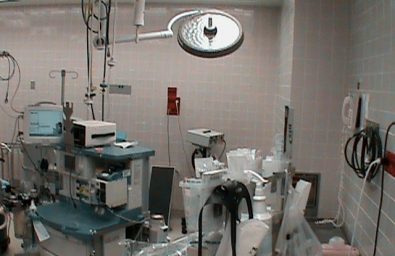Lean Healthcare TransformationImproving Operating Room Availability

- Operating Rooms (OR’s) represent the greatest opportunity for margin and profit impact (positive or negative) of any hospital department, but also represent the greatest expense and risk.
- Between OR cases (same room/same surgeon), the rooms must be turned over, which includes cleaning, restocking, preparation for the next case, pulling the next patient in…. all within a relatively brief period of time.
- Without a well-coordinated process, the turnover time can take too long and waste critical OR time. This can result in fewer cases being completed in a day and/or increased overtime expenses and frustration of staff and physicians.
- Most OR turnover processes contain infection control, ergonomic, and supply waste opportunities for improvement.
- This case study is a meta-analysis that explores three OR Quick Turn-Over (QTO) Kaizen events, with the consistent results validating the impact of this methodology (when facilitated properly)
challenge
- Decrease OR Turnover Time
- Improve infection control and compliance
- Decrease staff injury risk
- Decrease supply costs
- Improve overall flow and coordination
- Improve staff engagement
solution
· Conducted 3 day intensive Kaizen events, with a heavy emphasis on real time experimentation and standard work development & refinement
· Pre-work included video version of “current state”
· Focus on orthopedic cases (total hip and knee) as the OR QTO “model line”
· Single-Minute-Exchange-of-Dies (SMED) methodology, developed by Shigeo Shingo, was used to standardize and decrease OR turnover times, primarily focusing on:
(1) Separating internal from external setup operations
(2) Converting internal to external setup
(3) Standardizing function and
(4) Adopting parallel operations.
· Developed standardized turnover process focusing on parallel processes, clear triggers and delineation of duties, visual management, and moving internal to external steps .
· Continually emphasized to staff that this process was not focused on working faster, but on coordination and teamwork around standardized processes, triggers, and never compromising quality or safety.
results
· Decrease overall turnover time (“wheels out” of last patient to “wheels in” of next patient from between 40% to 55% (see detailed results below)
· Improved infection control risk through standardized process, decreased dwell-time through new antimicrobial solution, and clearly defined sequencing of steps to ensure infection control compliance
· Decreased staff injury risk through reconfiguration and standardization of case carts (heavy orthopedic trays on top instead of on bottom)
· Improved communication through better utilization of existing technology
· Decreased “open but not used” supply waste through pre-picking into “open” (green) and “have available” (red) bins.
· Decreased overtime and additional cases added to the schedule.
· Improved staff engagement and ownership of the process to support ongoing development and continuous improvement.
| Case 1 | Wheels out to Wheels In | Wheels in to Incision | Closure to Incision | Wheels out to Incision | Closure to Wheels Out |
| Baseline | 0:33 | 0:35 | 1:16 | 1:08 | 0:09 |
| Pilot Averages | 0:14 | 0:25 | 0:47 | 0:40 | 0:05 |
| Time Savings | 0:18 | 0:09 | 0:28 | 0:27 | 0:03 |
| % Improvement | 55% | 27% | 41% | 41% | 36% |
| Cases 2 & 3 | Case 2:
Wheels out to Wheels In |
Case 3:
Wheels out to Wheels In |
| Baseline | 0:38 | 0:33.5 |
| Pilot Averages | 0:22 | 0:20 |
| Time Savings | 0:16 | 0:13.5 |
| % Improvement | 42% | 40% |

